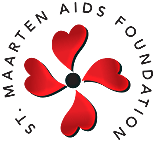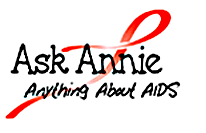knowledge is power get informed
Transmission: Where does the HIV virus live?
The HIV virus is present in body fluids. Body fluids which can contain significant amounts of HIV are not usually of concern to everyday people – amniotic fluid, cerebrospinal fluid and synovial fluid around bone joints, for example, are of concern only to healthcare workers that are involved in invasive surgical procedures.
However, the HIV virus is present in the following body fluids in infectious quantities:
- Blood and blood products
- Semen and pre cum
- Vaginal and cervical secretions
- Breast milk.
An HIV-positive person may have HIV in very small amounts in other body fluids such as tears, saliva and blister fluid, but usually not in enough amount to be infectious. Contact with saliva, tears, or sweat has never been shown to result in transmission of HIV.
Transmission: How is the HIV virus transmitted?
It is via the exchange of bodily fluids containing HIV virus that person-to-person transmission can occur.
The main routes of HIV transmission are through:
- Unprotected sexual contact with an infected person
- Sharing needles with an infected person
- From an infected mother to child during pregnancy, during birth or after birth while breastfeeding.
Blood used in blood transfusions is always checked for the virus, and is no longer a major risk for transmission.
For HIV transmission to occur the following criteria must be met:
1) HIV must be present
2) HIV that is present must be in sufficient transmittable amount.
3) It must be able to enter the bloodstream of the next person.
HIV cannot enter the body through healthy, intact skin.
The virus can however enter the body through cuts and wounds, and also through the so-called mucous membranes or soft tissues of the body. These soft and fragile tissues are found inside the vagina, on the tip/opening of the penis, the anus, the eyes and the mouth, and to some extent the inside of the foreskin on the penis.
Transmission: Who is at Risk?
You are at risk if:
- You have sex without condoms
- You have many sex partners and do not use condoms
- Your sex partner(s) has/have sex with other persons without using condoms
- You share unsterilized needles for intravenous drug use
Nobody is immune to the HIV virus. Anyone engaging in above activities is at risk of infection.
Transmission: Oral Sex & HIV
It is possible to become infected with HIV through oral sex. However the risk of becoming infected in this way is lower than for unprotected vaginal or anal sexual intercourse.
When giving oral sex to a man (sucking or licking a man's penis) a person could become infected with HIV if infected semen or pre-cum gets into any cuts, sores or (receding) gums in the mouth.
Giving oral sex to a woman (licking a woman's clitoris or vagina) is considered low risk, but not zero risk. Transmission could take place if infected fluids from a woman get into the mouth of her partner. The likelihood of infection might be increased if there is menstrual blood involved or if the woman is infected with another STI, which causes breaks in the skin, therefore increasing exposure to blood.
Transmission: Heightened Risk with the presence of other Sexually Transmitted Diseases
Having a sexually transmittable disease (STD) will make you more susceptible to become infected with HIV, especially when such a disease has caused wounds, blisters, and ulcerations of the genitals.
In addition, when a person has both HIV infection and another sexually transmittable disease, the amount of HIV in the body fluids (blood, semen, vaginal fluids) is greatly increased. This makes it more likely that HIV is transmitted during sex. For more information on STDs, click here [link to HIV and STI section].
Prevention: Protection From HIV
Abstinence or no sex is the only complete safe way of protection against sexually transmitted HIV infection.
This does not necessarily mean that you cannot have sex your entire life. It may mean not having sexual intercourse until you are in a monogamous (one person with one person only) sexual relationship, where both partners are tested and found not infected with HIV. This will only hold true for as long as neither of the partners goes outside this relationship and both stay faithful to each other.
In all other circumstances it is advisable to use condoms, correctly and consistently - every time you have sex. There are “male condoms” and “female condoms” commercially available and both can protect you against HIV and most other sexually transmitted infections.
Prevention: Correct & Consistent Condom Use
Used correctly and consistently, a condom will protect you from contracting HIV-infection/AIDS. A condom is the best barrier that is now available to prevent the transmission of HIV and other sexually transmitted infections during sexual intercourse.
There are “male condoms”, and “female condoms”. Both are sold on St. Maarten in many different varieties. Note that lambskin condoms are not safe to use for protection against infection. Only latex and polyurethane condoms are protective.
Most condoms come with lubrication. If you prefer to use additional lubrication, always use so called “water-based” lubricants like KY-jelly. Never use Vaseline, oil or creams for additional lubrication, because they will weaken the condom and it may break more easily.
Prevention: Using The Male Condom
Use a new condom for every sex act, from start to finish.
1) Carefully remove condom from package. Avoid using teeth or nails as this can burst the condom.
2) Hold the tip of condom to squeeze out air and place on erect penis.
3) Unroll the condom down the shaft to the base of penis.
4) Do not use oil-based lubricants, such as Vaseline. This can cause the condom to burst. Use a water based lubricant (such as KY), which is available at the drugstore or at an Adult Toy Store.
5) After you ejaculate (cum, break) withdraw while still hard and while holding the base of the condom to prevent it from slipping.
6) Wrap condom and dispose of it safely.
When you plan to use condoms for the first time, it makes sense to practice putting them on before actually using them during sex. When you feel more comfortable putting them on, you will be more likely to use them correctly during intercourse.
Prevention: Using The Female Condom
Use a new condom for every sex act, from start to finish.
1) Carefully remove condom from package.
2) If needed, rub condom with water or oil-based lubricant.
3) Hold the smallest ring part of the condom and squeeze.
4) Insert the condom as far as it will go. The condom should not be twisted.
5) Guide the penis inside the condom.
6) After sex, remove the condom by squeezing and twisting the outer ring. Pull it out and dispose of it safely.
Prevention: Correct & Consistent Condom Use
Used correctly and consistently, a condom will protect you from contracting HIV-infection/AIDS. A condom is the best barrier that is now available to prevent the transmission of HIV and other sexually transmitted infections during sexual intercourse.
here are “male condoms”, and “female condoms”. Both are sold on St. Maarten in many different varieties. Note that lambskin condoms are not safe to use for protection against infection. Only latex and polyurethane condoms are protective.
Most condoms come with lubrication. If you prefer to use additional lubrication, always use so called “water-based” lubricants like KY-jelly. Never use Vaseline, oil or creams for additional lubrication, because they will weaken the condom and it may break more easily.



